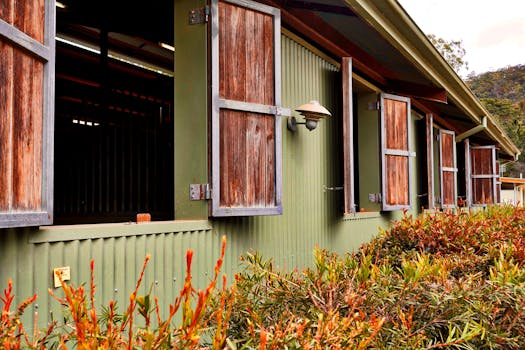Net-Zero Homes: How Green Building Codes Reshape Construction
When it comes to sustainability, the construction industry has a crucial role to play. With buildings accounting for 39% of global energy-related CO2 emissions, it’s clear that the way we design and construct our homes has a significant impact on the environment. That’s where net-zero homes and green building codes come into play. But what exactly are net-zero homes? And how are green building codes reshaping the construction industry?
The Rise of Net-Zero Homes
In simple terms, net-zero homes are homes that produce as much renewable energy on-site as they consume in a year. This means they have a net-zero carbon footprint, hence the term “net-zero”. The concept of net-zero homes has gained momentum in recent years as more and more people become aware of the need to reduce greenhouse gas emissions and combat climate change.
One major factor driving the demand for net-zero homes is the rising cost of energy. According to the U.S. Energy Information Administration, the average household in the United States spends about $2,000 a year on energy bills, and these costs are expected to continue to rise. Net-zero homes provide an attractive solution by significantly reducing or even eliminating energy bills.
Another reason for the growing popularity of net-zero homes is the increasing availability and affordability of renewable energy technologies. Solar panels, for example, have become more accessible and affordable in recent years, making it easier for homeowners to generate their own clean energy.
Green Building Codes: A Game-Changer for Construction
Green building codes are standards and guidelines that specify the environmental requirements for the design, construction, and operation of buildings. These codes cover a wide range of topics, including energy efficiency, water conservation, waste reduction, and indoor air quality, among others.
Traditionally, green building codes were voluntary guidelines that were adopted by developers and builders on a project-by-project basis. However, in recent years, there has been a push towards making these codes mandatory. This has been driven by governments and industry organizations in an effort to accelerate the transition towards more sustainable construction practices.
One of the most significant changes in the construction industry in recent years has been the adoption of the International Green Construction Code (IgCC) in the United States. Developed by the International Code Council, the IgCC integrates traditional building codes with sustainable building practices, and has been adopted in several states and cities across the country.
The Impact of Green Building Codes on Net-Zero Homes
One of the main ways green building codes are reshaping the construction industry is by establishing minimum requirements for energy efficiency in new and renovated buildings. These requirements often include provisions for energy-efficient heating and cooling systems, efficient lighting, and renewable energy systems, among others.
For net-zero homes to become a mainstream construction practice, green building codes play a crucial role. These codes set the standard for energy efficiency and renewable energy use in buildings, making it easier for developers and builders to incorporate these features into their projects. Additionally, green building codes also provide a level playing field for all construction companies, ensuring that sustainable practices are adopted industry-wide.
Challenges and Opportunities
While the adoption of green building codes is a step in the right direction, there are still challenges that need to be addressed. One major issue is the extra cost associated with building net-zero homes and complying with green building codes. The initial cost of implementing energy-efficient features and renewable energy systems can be significantly higher. However, over time, the savings in energy costs can offset this initial investment, making net-zero homes a financially viable option.
On the flip side, the rise of net-zero homes and green building codes is also creating new opportunities for businesses in the construction industry. With the growing demand for sustainable buildings, there is a need for skilled professionals, innovative technologies, and sustainable materials, creating new avenues for growth and development.
Conclusion
As the world moves towards a more sustainable future, the construction industry has a significant role to play. Net-zero homes and green building codes are a crucial part of this transition, and their impact on the construction industry cannot be overstated. By promoting energy efficiency, renewable energy use, and sustainable practices, these initiatives are leading the way towards a more environmentally-friendly and economically viable future. It’s time for the construction industry to embrace these changes and take a more proactive role in creating a greener and more sustainable world.







